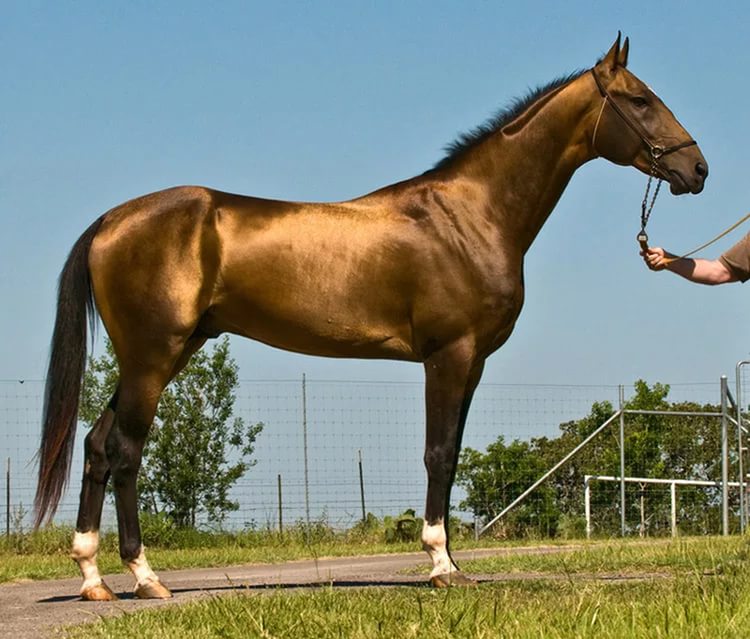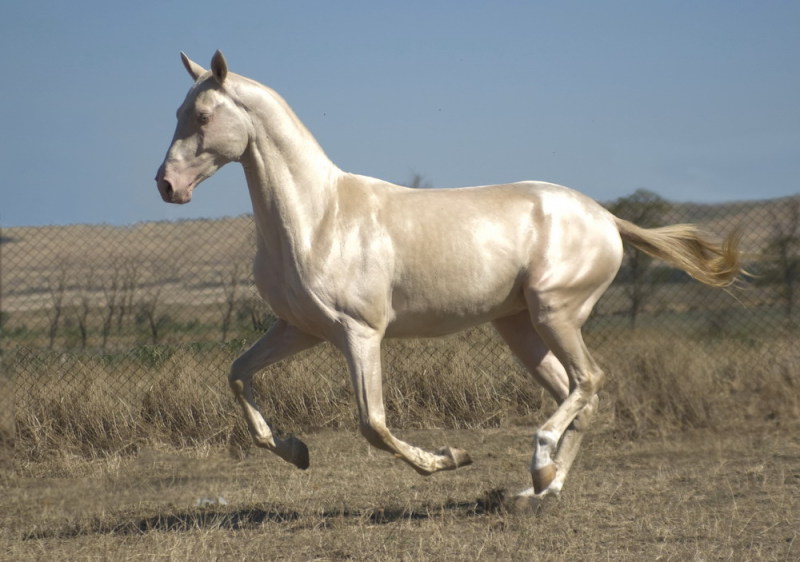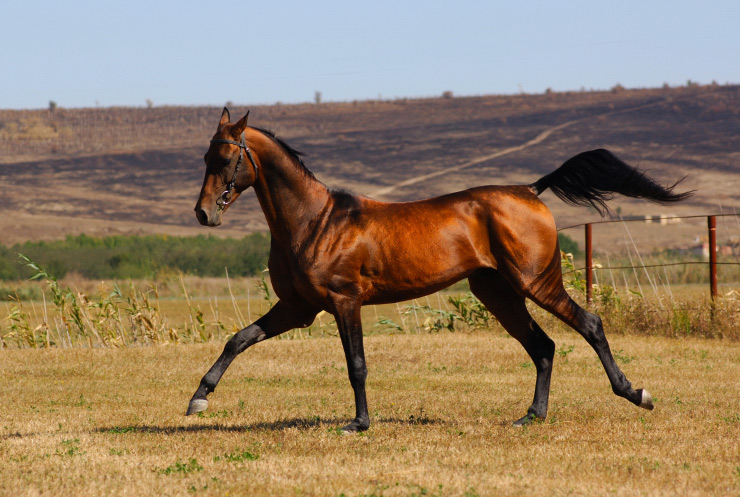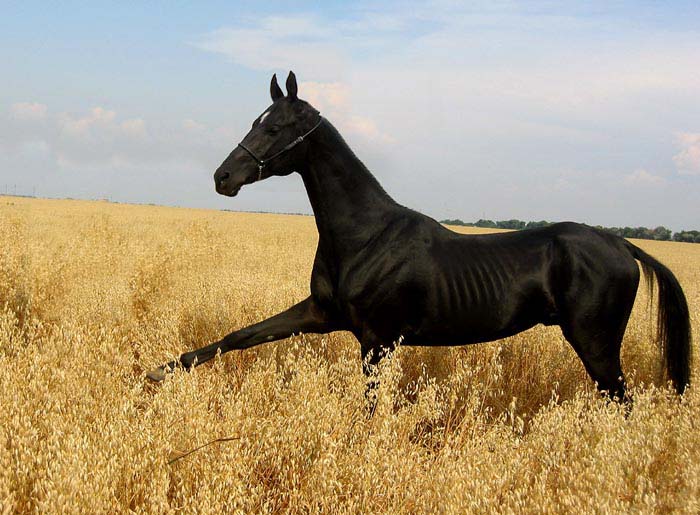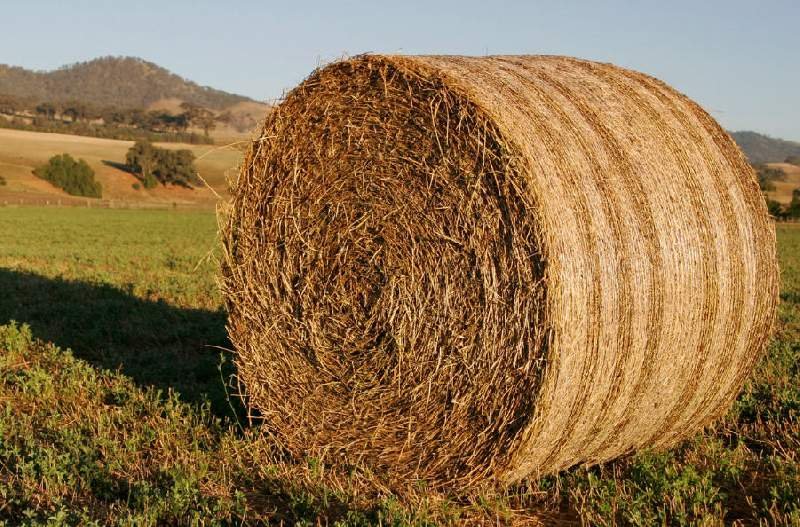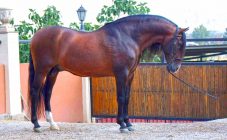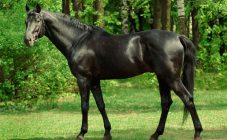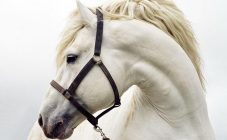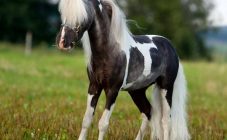Content:
The Akhal-Teke horse is one of the oldest purebred breeds that are still popular today. The contribution of horses to world horse breeding is so great that the leadership of the Republic of Turkmenistan decided to capture this representative on the state emblem.
History of the creation of the breed
It is not for nothing that it was Turkmenistan that chose the Akhal-Teke horse as a state symbol - in all likelihood, this country is the historical homeland of the Akhal-Teke horses, which are often called the Turkmen horse breed. There is an opinion that the first representatives of the breed appeared in the 3rd millennium BC.
The Akhal-Teke horse was bred by the peoples of Central Asia, whose main goal was to create a universal horse. Data on this is obtained from many books and works that mention the best horses in the area.
Breed development
After the Soviet power was established in the region, a set of measures began to improve the structure of agriculture.
The Akhal-Teke horse also fell under the modernization procedure. The main activities carried out on the breed with the aim of its development and improvement were aimed at increasing growth and straightening out flaws in the exterior. It is these changes that distinguish the modern horse from its ancestors.
Today this breed is bred not only in Turkmenistan, but also abroad. A fairly large number of Akhal-Teke horses are located in Russia, you can often find this horse in other former Soviet republics.
Characteristics of the Akhal-Teke horses
The appearance of the horse, as well as its character, was influenced by the historical conditions in which development took place. For the peoples of that time, mostly nomadic, the endurance of an animal was important in order to overcome long distances. In addition, all this was carried out in a hot, dry climate, on lands poor in pastures and rivers. That is why the Akhal-Teke horse has a special endurance and strong-willed character.
The appearance can be described as follows:
- The Akhal-Teke horse breed is quite tall. Akhal-Teke stallion reaches a height of about 160 cm.
- A real Turkmen argamak - a horse is usually medium in size, quite dense and muscular.
- This horse breed has a unique head and neck shape. Namely: the head is quite refined and elongated, and the eyes are slightly slanted. The neck, in turn, is long and thin.
- The Akhal-Teke horse has a rather thin and delicate skin through which thin vascular networks are visible.
- The Turkmen horse is distinguished by its hair, thick and smooth, although some eastern individuals may not have a mane at all.
- The suit can be different. Most often found: black, red, white, bay. Moreover, all these suits can have their own unique shades and tints, from silver to malty and so on.
- Akhal-Teke is a horse with an easy gait, which is especially important in competitive events.
If we talk about the features of character and disposition, then the Akhal-Teke horse is distinguished by its disposition and ardent temperament.It often happens that a foal or an adult Akhal-Teke horse does not admit anyone, except perhaps the owner. Representatives of this breed are smart enough, focused, good at many activities, especially equestrian sports. And although the breed has evolved over the centuries, their character remains unchanged.
That is why you need to work with a horse personally, developing your own individual approach.
How to care for Akhal-Teke horses
It should be borne in mind that horses have historically evolved in the mountains, so the best way to keep them is to do everything to bring the environment and nutrition closer to the historically correct. After all, this way you can preserve their unique wayward character. However, some breeders argue that by creating a home environment, you can gain more affection and trust from the animal.
For the animal to feel good, proper care is necessary, which includes:
- Providing proper nutrition and the required water level.
- Regular cleaning of the stall. To make this easier, you should take the animal to another place during the work. Then you need to remove the wet and dirty litter from the entire surface, carefully look at all corners so that there is no dirty litter left in the stall. If necessary, a disinfectant should be used. After all procedures have been carried out and the surface is completely dry, a new underlayment can be laid.
- Hygiene. The hair that is on the mane, as well as the tail, must be carefully combed out daily. In addition, it is necessary to cleanse the skin three times a day: with a wet, warm sponge, the eyes and nose. About once a week it is necessary to clean the animal completely with a brush and, if necessary, with a comb.
- Hoof care. In order to ensure the comfort of the animal, you need to find a competent blacksmith. It is better not to shoe on your own, because only an experienced craftsman can do it competently, without harm to the animal. Horseshoes are changed, usually every six weeks.
Diet and feeding
Proper nutrition is a guarantee that the animal will develop evenly, without complications and diseases.
So, the main components of the diet:
- Grass. No wonder this point is the first, since it is she who is the main source of food for the animal. Providing the horse with good pasture is a guarantee that the Akhal-Teke horse will receive all the necessary nutrients for growth and development. If a period of drought or other negative climatic influences is observed in the area, additional dry complementary foods should be introduced. Do not feed the animal with yellow or stale grass!
- Hay. The same herb, but dried. It is necessary to provide a good supply of dried grass, because an adult animal eats about 15 kg per day. Make sure the hay is free of weeds, fresh grass with rich green tones and a pleasant natural scent. You should not feed the animal on stale grass, especially moldy, as harmful microorganisms contained in it can cause serious lung diseases that cannot be treated.
- Cereals. This includes corn and oats. This type of food should be strictly dosed so that the horse does not develop obesity or stomach and dental problems.
- Concentrated mixtures. This type of product cannot be made at home, since it involves factory processing methods. It is these mixtures that are optimal to introduce when there is not enough grass on pastures.
- Salt. They are also very easy to find in retail stores. All of them include those mineral nutrients that the animal could receive less: iodine, cobalt, etc.
In addition, it is important to provide the Akhal-Teke with the required amount of water.
Determining the quantity is quite simple:
- if the weight of the animal is up to 410 kg - from 13.5 to 27 liters (optimally 20);
- weight in the range from 410 to 545 kg - from 18 to 36 liters (optimally 27);
- with a weight of 545 to 680 - from 22.5 to 45 liters (optimally 45).
Although this breed of Turkmen horses is not very popular outside of Turkmenistan and Russia, here they have great potential. According to the latest data, Russian agriculture has the largest stock of Akhal-Teke horses. Breeding is mainly carried out in Bashkiria, Dagestan, Kalmykia and in the Stavropol Territory. After all, the horse argamak (it was under this name that it existed in Russia in early times) is universal for riding and, as a rule, takes all the prizes at the races.
Breeding of this type of horse for commercial purposes is popular in Russia. This is due to both its aesthetic qualities and unique strength and endurance. This type of business is quite profitable, since the cost of a young foal is relatively low, and an adult stallion can be used at horse races, in the tourism business, and in the agricultural industry.
